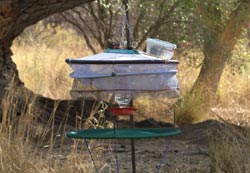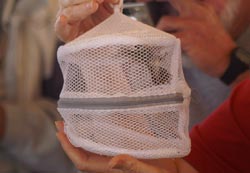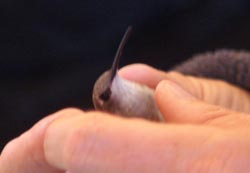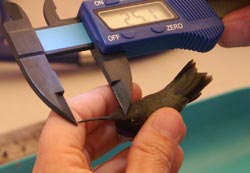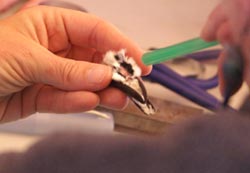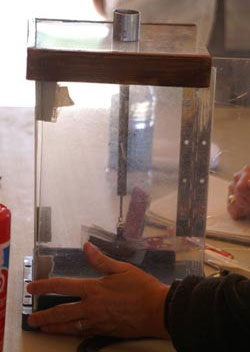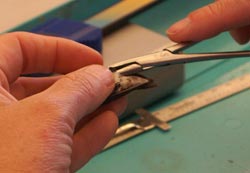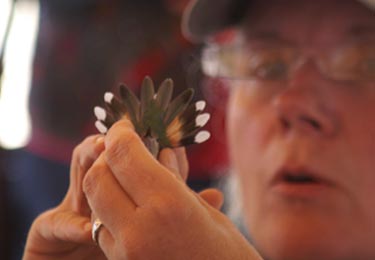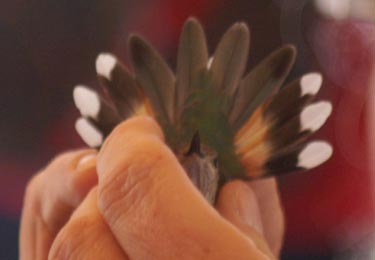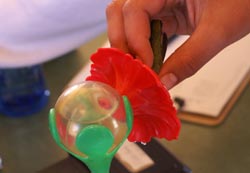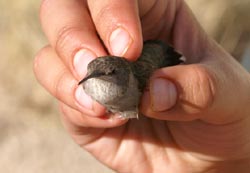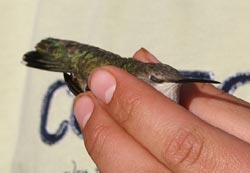Hummingbird Banding, San Pedro House, Sierra Vista, Arizona - April 15, 2009
We were honored to be invited to join some friends (Moe and Cris) for the banding of the hummingbirds at the San Pedro House in the
San Pedro Riparian National Conservation Area, just east of Sierra Vista. We each took a half day from work, charged the camera batteries, loaded into Moe's van and headed out. As 30 to 40 MPH winds buffeted us on the road, we became worried that the hummingbird banding might be cancelled. Not to worry, though. It takes a little more than a bit of wind to keep these little guys down.
The first question we had was, "How do they capture a hummingbird?" We never saw that part when we arrived as we were suddenly caught up in the banding process, but we did get a picture of the trapping station, here on the left. From there the bird is carried in a netted house (picture on right) to the banding station, about 50 yards away.
Once extracted from the netted house, the bird is measured, both full length and beak. It is then weighed. This is done by wrapping him/her in a light-weight fabric and then clipping that to the scale. (Picture on right - bird is in the net just above the person's thumb) This particular bird was already banded, having been captured the week before. She was also pregnant. Her weight the previous week was 3.6 grams. Here she is 3.9 grams. For those of us who are metric challenged, 3.9 grams is .14 oz. You are reading that correctly - about 1/8th of an ounce. Need a familiar reference? The weight of a nickle is 5 grams or .18 oz.
The bird is then inspected for parasites and such. This is our pregant lady on the left, her pink belly revealing that she is not far from laying her egg. On the right is a male being banded. The band is so small I can't even see it, let alone read the number on it.
After all the measurments and inspections are taken care of and recorded, it is time to release the hummingbird. If the bird had previously been banded they look it up in their card file to determine if it was adopted when it was first banded. If not then for a donation to the San Pedro House one can adopt it, name it and then personally release it back to the wild. They will receive a certificate of adoption and email notification whenever the bird is caught again and inspected.
Before release the hummingbird is fed ( left above) so that it will have no reason to immediatly return to the feeders where the trap is set. After that it is carried into the open and presented to the person releasing it. In this case, Penny volunteered. This bird is Bella, having been adopted the week before. If it hadn't, Penny was intending on adopting it. Maybe next trip.
On the right is Penny being presented Bella.
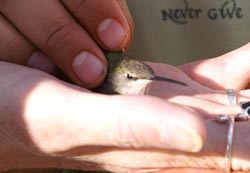
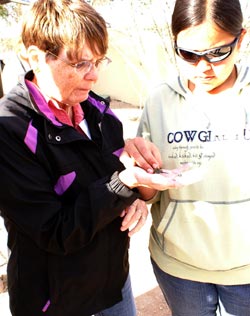 Penny with Bella just
Penny with Bella just
before release

